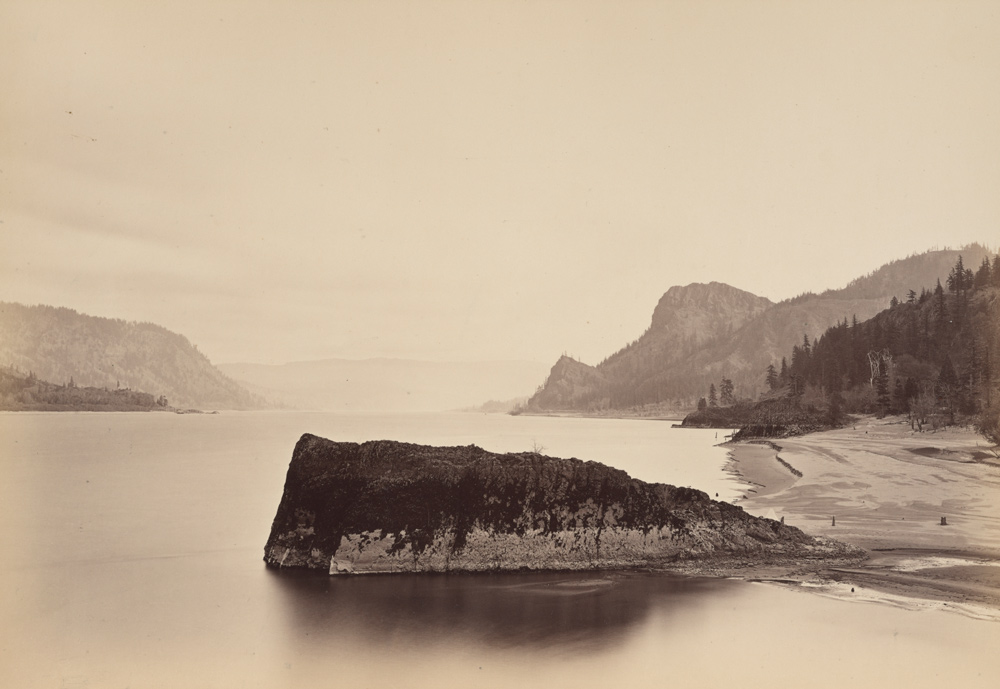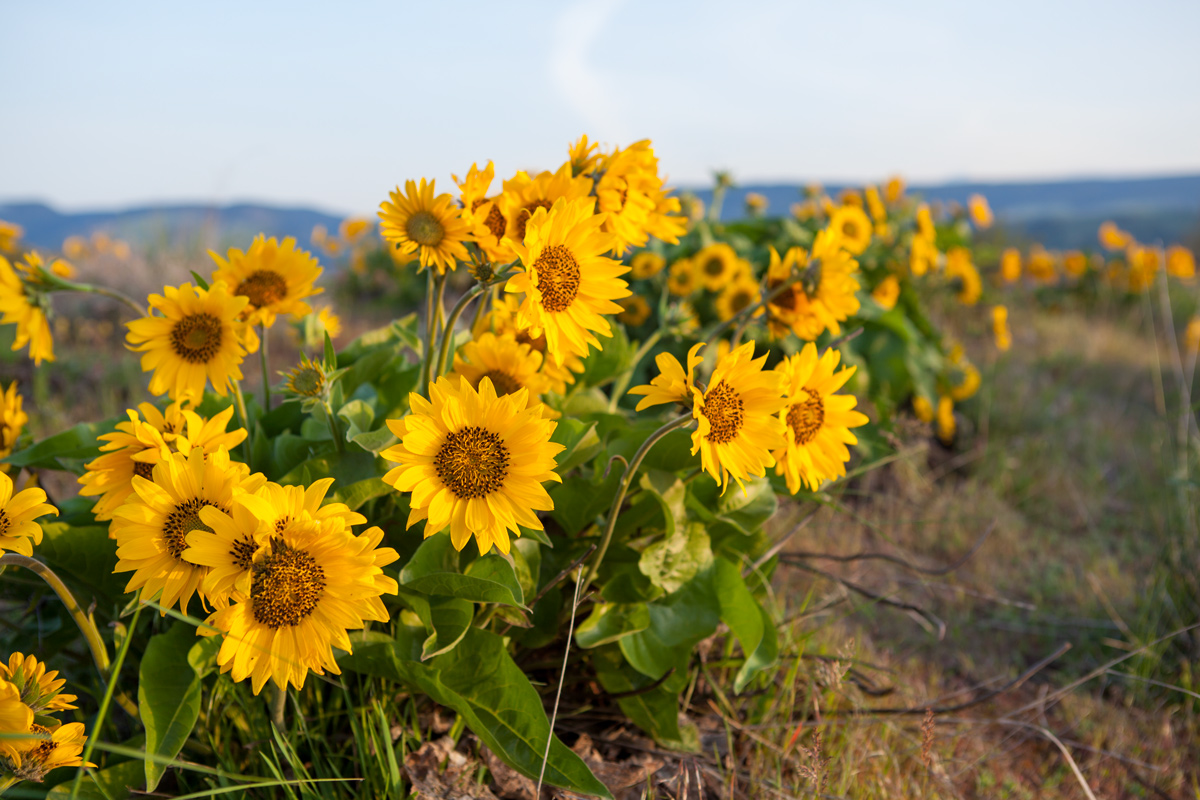Below present Lyle, Washington, the canoeists paddle a relatively calm stretch of the Columbia River. Lewis enjoys romantic scenes and a drier climatic zone; and he prepares four plant specimens. The captains are encouraged to see residents with horses.
Together Again
by Yellowstone Public Radio[1]Originally aired weekdays by Yellowstone Public Radio during the Bicentennial observance of 2003-2006. Narrated by Hal Hansen. Scripts by Whit Hansen and Ed Jacobson. Produced by Leni Holliman. © … Continue reading
Romantic Scenes
the mountains through which the river pases nearly to the sepulchre rock, are high broken, rocky, partially covered with fir white cedar, and in many places exhibit very romantic seenes [scenes]. some handsome cascades are seen on either hand tumbling from the stupendious rocks of the mountains into the river.
—Meriwether Lewis
Drier Climate Zone
near the border of the river I observed today the long leafed pine. this pine increases in quantity as you ascend the river and about the sepulchre rock where the lower country commnces it superceedes the fir altogether.
—Meriwether Lewis
Sunken Forest
throughout the whole course of this river from the rapids as high as the Chilluckkittequaws, we find the trunks of many large pine trees sanding erect as they grew at present in 30 feet water; they are much doated and none of them vegetating; at the lowest tide of the river many of these trees are in ten feet water. certain it is that those large pine trees never grew in that position, nor can I account for this phenomenon except it be that the passage of the river through the narrow pass at the rapids has been obstructed by the rocks which have fallen from the hills into that channel within the last 20 years;
These people call themselves We-ock-sock, Wil-la-cum. they differ but litte in appeance dress &c. from those of the rapids.
—Meriwether Lewis
Horses
about noon the wind rose so high from the N. W. that we came too at a village on the N. Side where we Saw 25 or 30 horses which are in tollarable good order.
—Meriwether Lewis
Arrowleaf Balsamroot
Balsamorhiza sagittata
Tom McCall Preserve near The Dalles, Oregon, 29 April 2012. © by Kristopher K. Townsend. Permission to use granted under the Creative Commons Attribution-Share Alike 4.0 International license.
Arrowleaf Balsamroot Specimen
The stem is eaten by the natives, without any preparation. On the Columbia. Apr 14th 1806
—Meriwether Lewis[2]Moulton, ed. Herbarium, specimen 28.
Weather Diary
State of weather at rise
Wind at rise
State of the weather at 4 P.M. Wind at 4 P.M. River fair W fair raise raised 1 in. wind arrose at 8 A. M. and contined hard all day. service bury in blume.
—Meriwether Lewis[3]To assist the reader of this web page, the date column is not presented, the “State of the Columbia River” columns have been merged, and some abbreviations have been spelled out.
Notes
| ↑1 | Originally aired weekdays by Yellowstone Public Radio during the Bicentennial observance of 2003-2006. Narrated by Hal Hansen. Scripts by Whit Hansen and Ed Jacobson. Produced by Leni Holliman. © 2003 by Yellowstone Public Radio. |
|---|---|
| ↑2 | Moulton, ed. Herbarium, specimen 28. |
| ↑3 | To assist the reader of this web page, the date column is not presented, the “State of the Columbia River” columns have been merged, and some abbreviations have been spelled out. |


